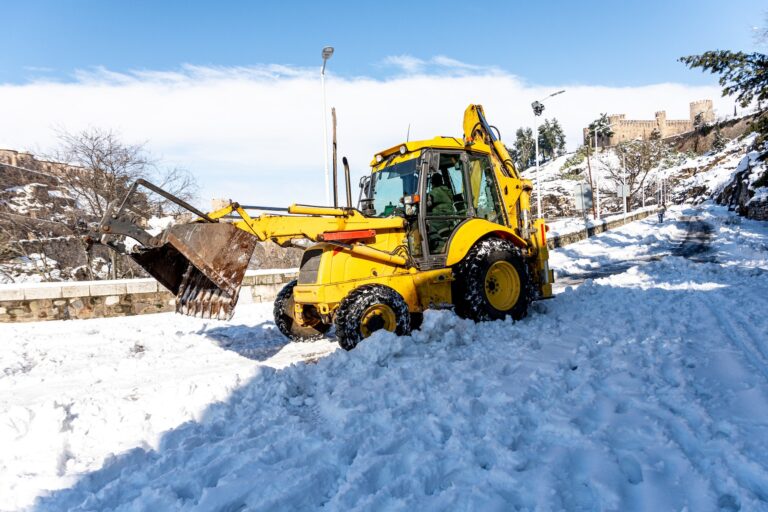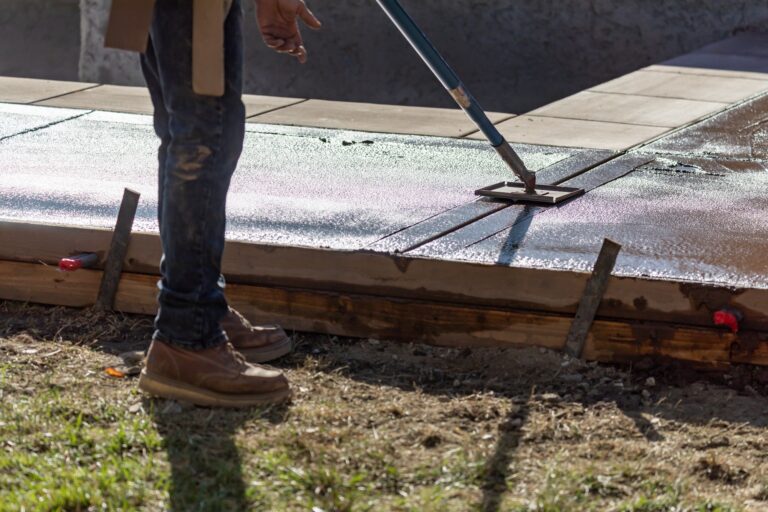
Home » Blog: Nova Construction Pro » Seasonal Concrete Mixes for Northern Virginia’s Weather




While it is ideal to install concrete under optimal weather conditions, professional contractors frequently undertake concrete installations throughout the year. By making strategic modifications to the concrete mixes, these experts are able to adapt to a variety of weather challenges, ensuring the integrity and durability of their constructions regardless of the season.
In high temperatures, concrete can dry too quickly, leading to cracking. To prevent this, a lower ratio of water to cement is recommended. Additionally, using aggregates that retain moisture and incorporating hydration stabilizers can extend the workability time, ensuring a stable and reliable setting process.
In cold weather, the hydration process of concrete slows down, which can delay setting and strength development. To counteract this, using a higher ratio of cement can speed up hydration. Incorporating warm water and using fast-setting cement are also effective strategies. In some cases, insulating blankets or heaters may be necessary to maintain an adequate temperature during curing, protecting the concrete from the adverse effects of cold weather.
Accelerators are crucial in cold weather, shortening concrete's setting time and fostering early strength development. This is particularly vital for seasonal concrete mixes, ensuring timely project progression despite low temperatures.
Calcium chloride is a common choice for its effectiveness and cost-efficiency. However, its corrosive potential on steel reinforcement necessitates alternatives like calcium nitrate or calcium formate in reinforced structures, balancing durability with economic considerations in seasonal concrete mixes.
Retarders play a pivotal role in managing concrete's setting time during hot weather, essential for maintaining workability and finishing quality in seasonal concrete mixes. They provide a critical adjustment mechanism to counteract rapid setting times induced by high temperatures.
Choices among retarders include sugar, lignosulfonates, and hydroxycarboxylic acids, each with specific applications and effects on concrete strength and setting times. Proper selection and dosage are key to leveraging retarders' benefits without compromising the structural integrity of seasonal concrete mixes.
Strategic timing of concrete pours is crucial for managing the impact of weather. In hot climates, early morning pours leverage cooler temperatures, reducing evaporation and avoiding premature drying. This approach is key to maintaining the concrete's moisture and integrity.
Conversely, in colder climates, pouring in the afternoon utilizes the day's warmth, preventing the concrete from freezing and supporting the start of the curing process. Such scheduling is vital for the concrete's structural integrity and longevity, embodying adaptable strategies for seasonal concrete mixes.
Unexpected rain can jeopardize fresh concrete, making waterproof coverings like tarps and plastic sheeting indispensable for protecting hydration processes. This readiness is essential for maintaining quality in seasonal concrete mixes, regardless of sudden weather shifts.
In the face of sudden cold snaps, having heaters or insulated blankets on standby ensures the concrete remains at an ideal curing temperature. Such emergency measures safeguard the concrete against extreme weather, ensuring the project's quality and timeline are preserved.
Temporary windbreaks are vital for shielding fresh concrete from strong winds, preventing surface drying and cracking. Materials like plywood, tarpaulins, or screens effectively mitigate wind effects, crucial for maintaining the quality of seasonal concrete mixes.
Sunshades play a key role in protecting concrete from direct sunlight, averting rapid moisture loss and uneven curing. Using reflective materials ensures consistent curing temperatures, essential for achieving optimal strength in seasonal concrete mixes.
In warm conditions that accelerate evaporation, reducing the water-to-cement ratio is advisable. Water-reducing admixtures maintain workability while decreasing water content, minimizing shrinkage and cracking risks in seasonal concrete mixes.
A slightly higher water-to-cement ratio may benefit concrete curing in cold, damp conditions, facilitating the hydration process. Finding the right balance is key to preserving workability and ensuring the structural integrity of seasonal concrete mixes.
Adapting concrete installation techniques to different weather conditions is essential for maintaining structural integrity. Recognizing the challenges of various climates allows contractors to ensure durability and high construction quality.
Modifying concrete mixes and using protective measures against rapid weather changes are crucial. These approaches help overcome potential setbacks, enhancing the resilience of concrete in seasonal conditions.
Real-time temperature monitoring and emergency planning enable adjustments to environmental factors on the fly. This adaptability is key to securing the longevity of concrete structures against the challenges posed by different seasons.
Adaptive strategies reflect a commitment to excellence, resulting in structures that withstand time and weather. This approach underlines the importance of quality and durability in seasonal concrete mixes.
For more insights into concrete installation and professional services, visit our concrete page. Read what our satisfied clients have to say about our work on our TrustIndex page. To explore more about construction trends and tips, check out our Main Blog Page.
© 2024 Nova Construction Pro